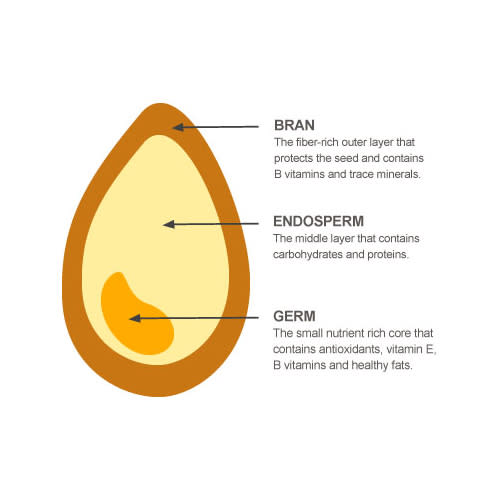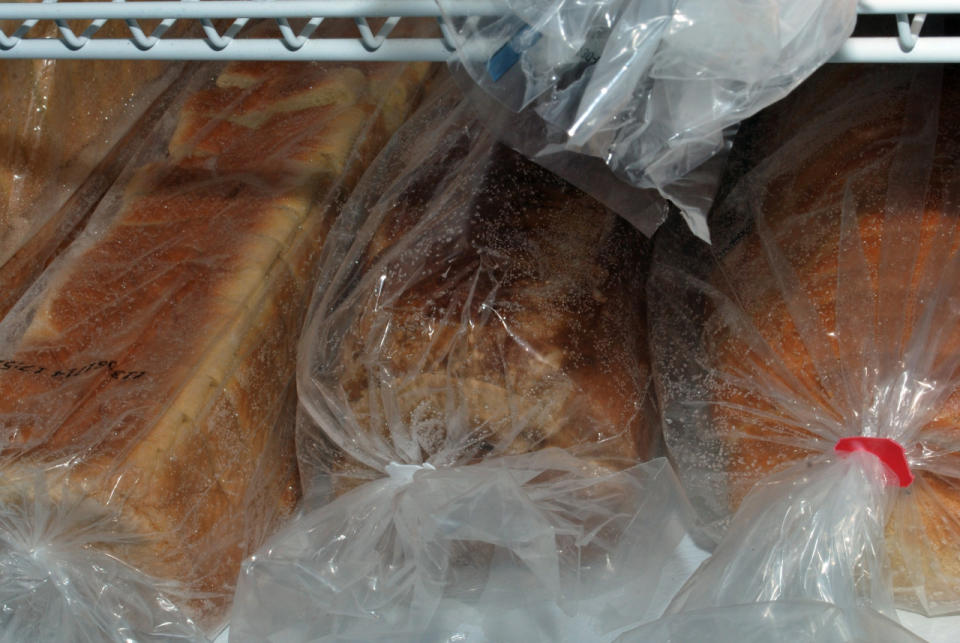What’s the difference between whole wheat, whole grain and multi-grain?


[Photo: Getty/Jeremy Woodhouse/Carl Kravats]
Whole wheat. Whole grain. Multi-grain. Whole wheat flour. Refined flour. What in the world is the difference and how do you know how to tell things apart?
Well the key is to take a look at the ingredients lists (you know those tiny print found on the back of your food product), instead of being distracted by the flashy and bold claims on the front of the packaging.
These claims can unfortunately be rather misleading. For example, did you know that if a product has “made with whole grains” on it, it could mean it’s made from whole grains or it could also mean it’s made from part of the whole grain?
Here’s what to look out for the next time you go grocery shopping.

[Image: attractingwellness.net]
Look for bran, germ and endosperm
These three ingredients should be on the ingredient label when you’re buying whole grain bread, preferably as the first ingredients. All three make up the wheat kernelgrain. Bran is the multi-layered outer shell of a grain of wheat and is a good source of fibre and essential fatty acids. The germ is the “embryo” of the grain that grows into another plant. It contains polyunsaturated fats and some protein and minerals. Finally, the endosperm is the food supply for the plant for when it starts to grow. It contains carbohydrates and proteins.
Pick whole grain over multi-grain
As a rule of thumb, when it comes to breads or other grain (starch) products, it’s best to choose 100 per cent whole grain.
Multi-grain essentially means “multiple parts of multiple grains”. Translated, that can sometimes indicate that multiple grains have been refined and stripped down to their individual parts and only parts of the grains have been added back into the final product.
Essentially, parts of the grain like the germ and endosperm, which hold a plethora of nutrients and essential fats, may be removed as it decreases the shelf life of a product.
Look for bread in the freezer section
Purchasing a 100 per cent whole grain bread product from the freezer area (ie. Silver Hills Breads or Ezekiel Breads in Canada), and having to keep the bread in your own freezer at home may indicate that very few preservatives are added to the breads, and therefore they cannot stay on the shelves for long periods of time to avoid mould growth.

[Photo: Getty/smileitsmccheeze]
Know the difference between whole grain and whole wheat
100 per cent whole grain whole wheat flour is made by grinding the whole grain into a powdery substance. In Canada you don’t often see “100 per cent whole grain whole wheat” but rather “100 per cent whole wheat”. This is because, in Canada, to manufacture a whole wheat flour, up to 5 per cent of the whole grain kernel can be removed meaning the whole grain is not entirely present or used.
If you’re baking with whole wheat, you can up the nutrition factor by adding in ground flaxseed, wheat germ or wheat bran which are sold separately in stores. To prevent your batter from becoming too dry, try adding a little milk, oil, yogurt or applesauce.
Know what are ancient grains
There is also a growing interest in “ancient grains” including quinoa, barley, bulgur, spelt, kamut, amaranth, buckwheat, millet, and teff. These grains are exactly as their name describes – ancient, meaning they were discovered thousands of years ago, hold a plethora or nutrition and are outstanding alternatives to most of the present-day grains which are more refined.
You still need to be mindful choosing these grains. For instance whole grain barley is still healthier than pot and pearl barley and other refined alternatives that have had some of their nutrition removed.
Whether you choose to cook up one of these grains like you would rice, add it to a minestrone or soup, or hey, make stuffed peppers with, there is an abundance of ideas to get creative with here! Just remember to pay more attention to what’s in your actual grain than what’s on the packaging.
Interested in writing for us? Join our Yahoo Blogger Network!



